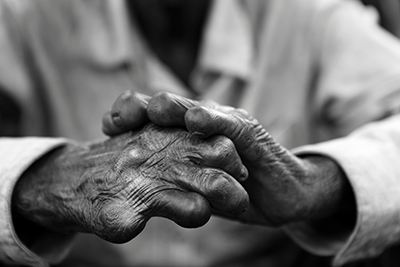 Does it still exist in Malaysia and other countries worldwide?
Does it still exist in Malaysia and other countries worldwide?
Leprosy is one of the oldest diseases known to humankind. It is also known as Hansen’s disease or “kusta” in Malay. It is caused by Mycobacterium leprae, which affects peripheral nerves, upper respiratory tracts and eyes. Historically, there were huge misconceptions on kusta, in which all the affected patients were isolated and not allowed to mix with the community. The first isolation center was built in Malaysia as early as 1850 in Malacca. Subsequent leprosy settlements were later built in Pulau Jerejak, Penang in 1871; followed by Setapak Camp in 1893, followed by Pulau Pangkor Laut Camp in 1903 before Sungai Buloh Leprosy Settlement took over in 1920s.
Indeed, leprosy still occurs in Malaysia, but reducing in trend from 6 per 10000 population in 1980s to as low as 0.2 per 10000 population from 2012 onwards. World Health Organization (WHO) already established its goal initially in 1990 of eliminating leprosy by year 2000. This is actually achievable as the prevalence rate worldwide had coming down to 0.37 per 10000 populations. Malaysia already achieved elimination (less than 1 per 10000 populations) of leprosy in 1994. Despite that, great numbers of cases were still seen in India, Brazil, Indonesia, Nigeria and Bangladesh.
How is someone infected with kusta?
It is transmitted by nasal secretions and droplets between humans (untreated patients) in endemic area. It can be transmitted from animals to human, especially from armadillos. Nevertheless, it is not highly contagious. Furthermore, effective treatment is available.
When should I suspect kusta?
Kusta should be suspected if following are presents:
- You feel altered sensation on your skin such as loss of sensation
- You experience weakness over the muscles of your hands and feet
- You see abnormal structures or deformities on your skin for example loss of its normal colour or tone, raised skin lesions such as nodules, thickened ear lobes or thickened infiltrating skin lesions on the face
- Doctor may feel thickness of your nerve running under your skin during examinations
What diseases can mimic kusta?
Nevertheless, other conditions or diseases may have some features of kusta, in which these need to be considered as well, before come into diagnosis of kusta alone. The conditions include birthmarks (isolated localized abnormal skin tone or patches), fungal infection (loss of colour of the infected skin), autoimmune disease involving the skin such as vitiligo (which also presents with loss of skin colour, but usually the patient will also exhibit other autoimmune disease features such as joint pain, oral ulcers or skin rashes)
What are the risks if kusta not treated early?
The limbs may be prone to ulcers and later develop infections and deformity. If it involves nerves on the face, ulcers may occur on eyes which later may develop into blindness.
How to diagnose?
Kusta can be diagnosed by clinical presentation and evidence of the organism from the slit skin smear or skin biopsy features.
Is it treatable?
Kusta can be treated with antibiotics, ranging from 6 months to 18 months (depending on its subtypes). The treatment is really effective in which the 1st dose of the antibiotic (rifampicin) can kill about 99.99% of the bacilli. Compliance always play crucial role in eliminating the mycobacterium.
Is there any need for isolation?
No. There is no need for isolation as it is a treatable disease and patient can stay with family members and community.
How to prevent kusta?
Until now, no vaccine available or any medications can be given as preventive antibiotics. Therefore, the best strategy is by early recognition, detection and treatment of the disease, avoiding over-crowdedness and elimination of poverty.
As a conclusion, kusta is not a curse. It is a treatable disease. No individual should suffer from discrimination due to present or past kusta. Happy World Leprosy Day!.
This article is published in conjunction with World Leprosy Day – 29th January 2016.
This article was written by Dr Mohd Shaiful Ehsan.
Dr Mohd Shaiful Ehsan is a family medicine master trainee in the International Islamic University Malaysia.
References:
- Uptodate – Epidemiology, microbiology, clinical manifestations and diagnosis of Leprosy.
- Kumar and Clark’s Clinical Medicine Eight Edition
- World Health organization (WHO) Multidrug Therapy (MDT)
[This article belongs to The Malaysian Medical Gazette. Any republication (online or offline) without written permission from The Malaysian Medical Gazette is prohibited.]
